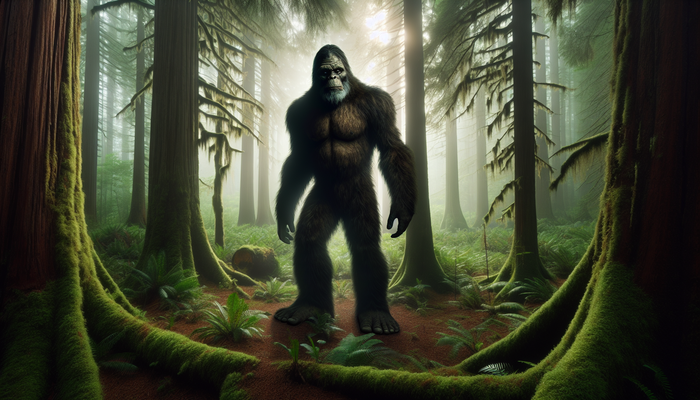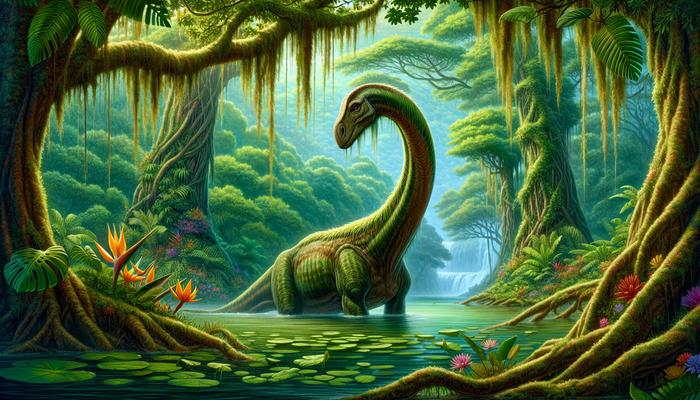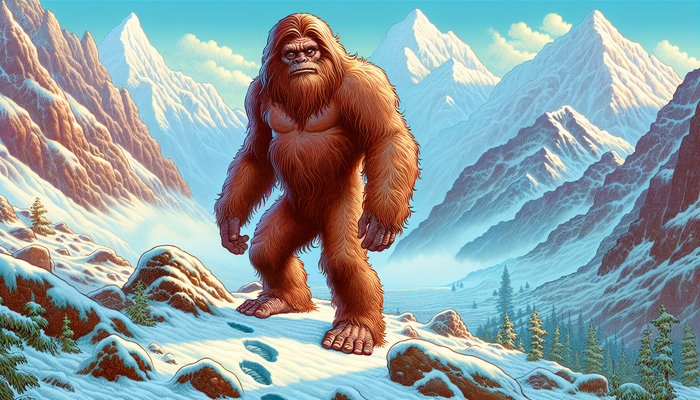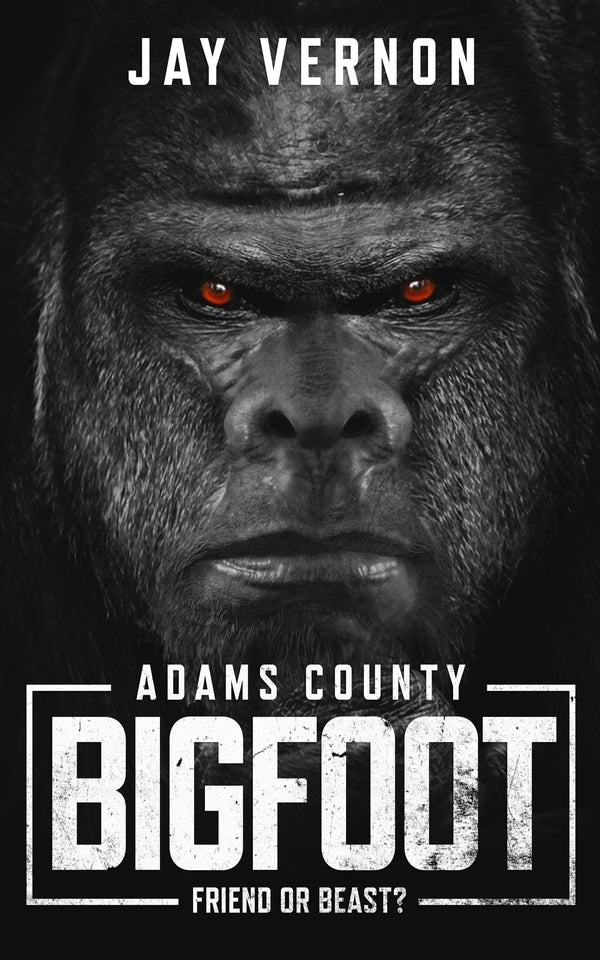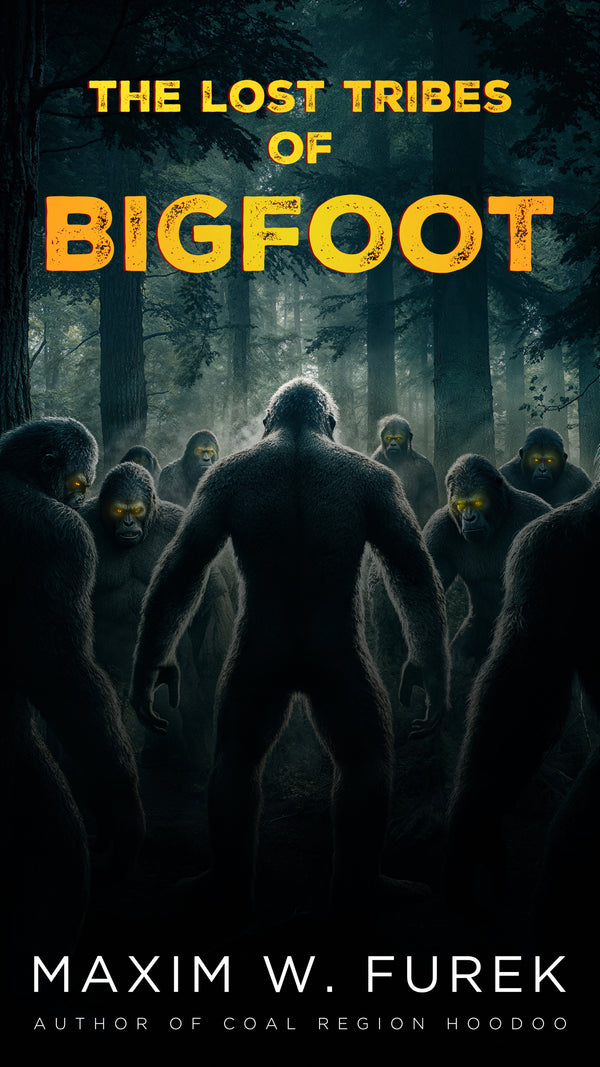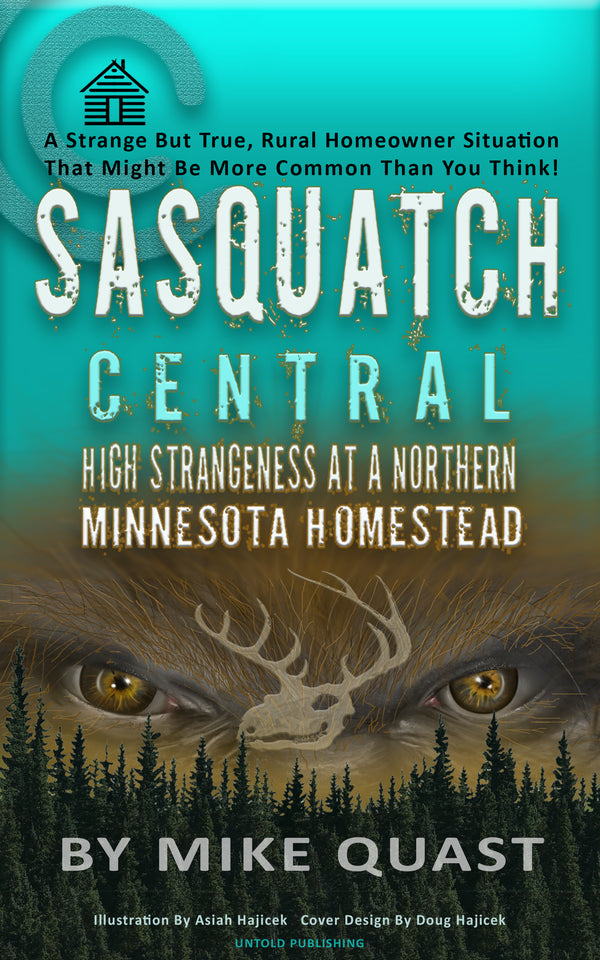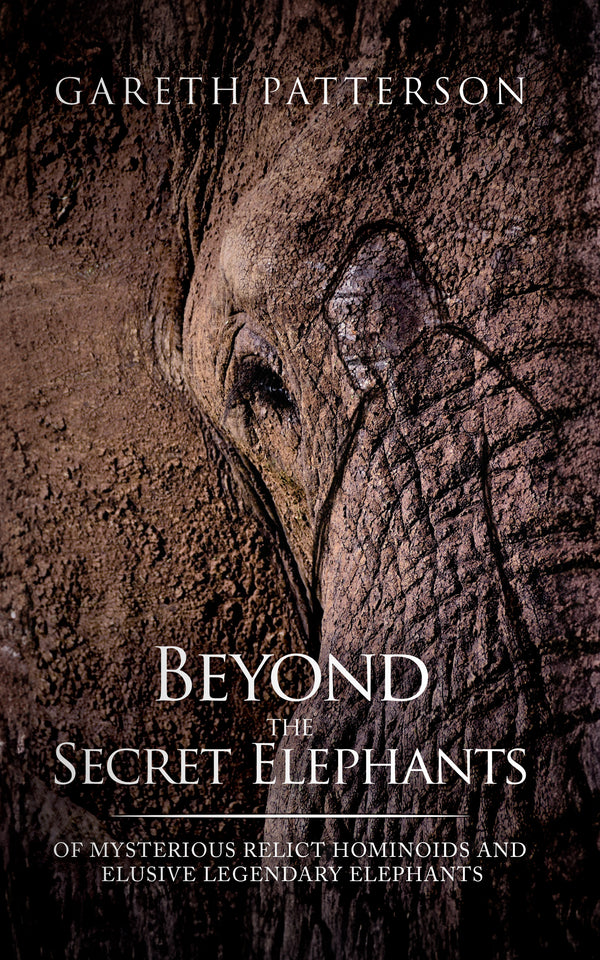Is Bigfoot Dangerous?
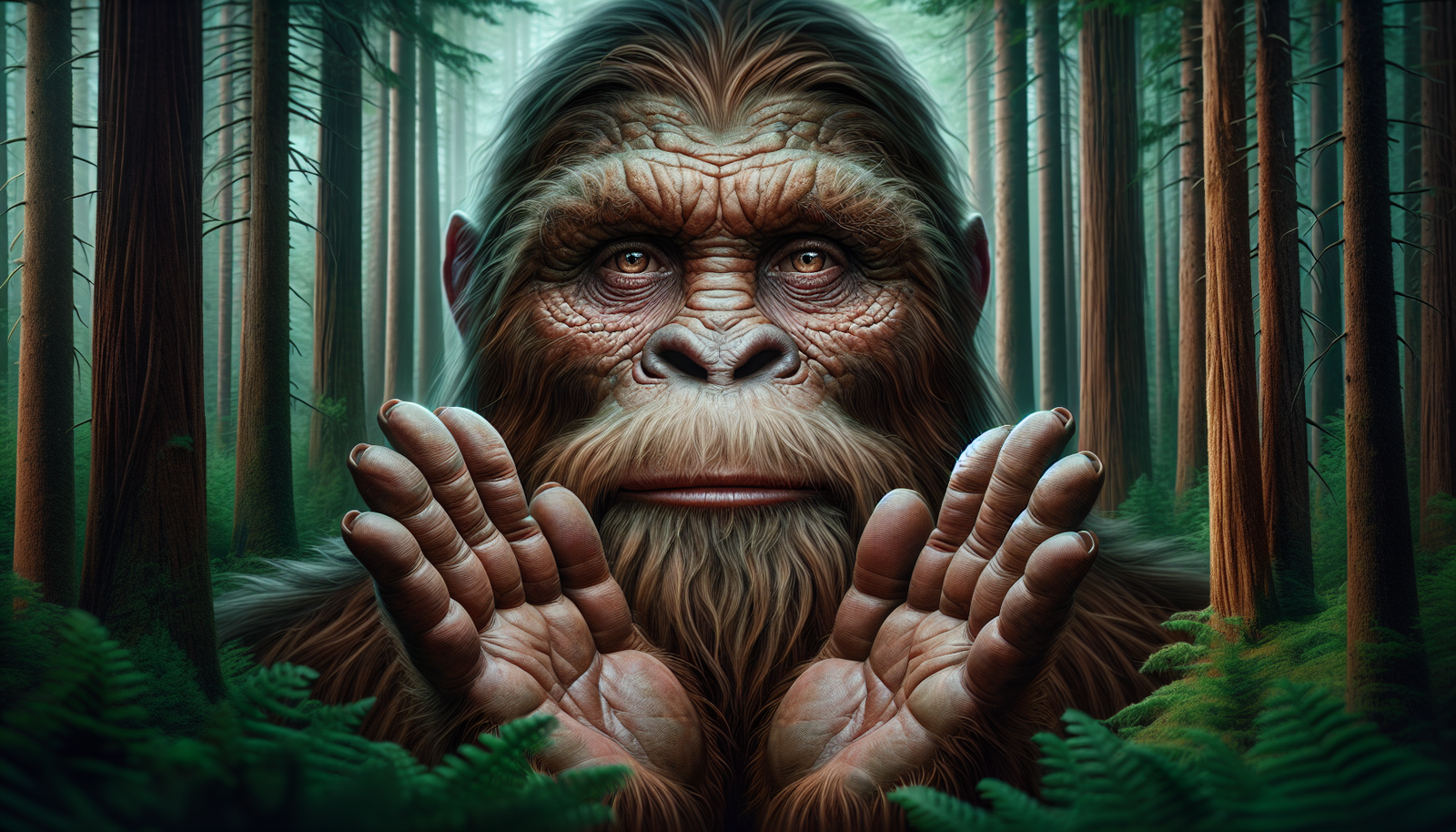
By James Roberts, Cryptozoologist and Tour Guide
Imagine encountering a massive, hairy humanoid creature in the wilderness - would you fear for your life? It's a scenario that has played out in countless campfire stories, Hollywood films, and alleged real-life sightings. Bigfoot, also known as Sasquatch, is often portrayed as a fearsome, unpredictable beast that could easily rip a person limb from limb. But is this towering cryptid really the bloodthirsty monster of our nightmares?
The Bigfoot Legend and Potential for Danger
There's no denying that Bigfoot cuts an imposing figure. Witnesses typically describe it as standing 7 to 10 feet tall and weighing upwards of 500 pounds, with a heavily muscled, ape-like build. Footprint casts and photos suggest it has enormous feet, as much as 24 inches long and 8 inches wide. Even more astonishing are reports of Bigfoot's incredible strength. In numerous sightings, the creature is said to have twisted thick tree branches like pipe cleaners, hurled boulders the size of bowling balls, and even uprooted small trees.
With physical characteristics like these, it's understandable why some people assume Bigfoot must be incredibly dangerous, perhaps even prone to attacking humans. After all, grizzly bears and mountain gorillas are much smaller than Bigfoot, and they've been known to seriously injure or kill people. If Bigfoot wanted to, it could probably tear a man apart with its bare hands.
Native American folklore often reinforces this frightening image of Bigfoot. The Lummi people of the Pacific Northwest have stories of "Ts'emekwes," a tribe of hairy, gigantic, cannibalistic wild men. The Salish refer to "Sasquatch," meaning "wild man" or "hairy man," who was known to snatch children who ventured too close to the forest. Cherokee legends tell of bloodthirsty, stone-skinned giants called the "Kecleh-Kudleh" that preyed on humans. Even President Theodore Roosevelt wrote of a frontiersman's tale of a trapper being killed by a "Bigfoot-like" creature.
So it's no surprise that many modern-day Bigfoot researchers acknowledge the creature could pose a serious threat to humans, at least in theory. As anthropologist Grover Krantz put it, "Sasquatches are big, strong animals, certainly capable of killing humans if they wished to do so." Respected primatologist John Napier concurred, writing, "If the Sasquatch exists, it is the most dangerous animal on the North American continent - certainly more dangerous than the grizzly bear."
But here's the key question: Does a capacity for aggression necessarily translate to an active threat? After all, Bigfoot may be physically capable of harming humans, but that doesn't mean it has any inclination to do so. To answer this, we need to look beyond Bigfoot's daunting appearance and examine its actual behavior. As we'll see, there's a big difference between Bigfoot's potential for danger and the real risks it seems to present.
Bigfoot Sightings and Encounters
One of the most striking things about alleged Bigfoot encounters is how consistently non-violent they are. The Bigfoot Field Researchers Organization (BFRO), which maintains the world's largest database of sightings, has compiled over 5,000 reports from the past century. In case after case, witnesses describe Bigfoot displays ranging from indifference to avoidance to occasional threat displays - but almost never outright attacks.
The vast majority of sightings, in fact, involve Bigfoot fleeing from humans as soon as it's spotted. Veteran Bigfoot investigator and anthropologist Dr. Jeff Meldrum notes that a creature of Bigfoot's stature "would be extremely unlikely to have remained undetected in the face of increasing encroachment on its habitat if it were prone to aggression. Quite the contrary, it has remained remarkably elusive."
This tracks with my own experiences interviewing Bigfoot witnesses. I've lost count of how many times I've heard a story that goes something like this: A hunter is walking through the woods, hears a strange noise, turns and sees a huge hairy creature staring back at him. Hunter and Bigfoot lock eyes for a few breathless moments, then the creature turns and vanishes into the forest, leaving the eyewitness shaken but unharmed.
Even at closer range, Bigfoot's behavior appears to be more defensive than aggressive. BFRO files contain numerous reports of Bigfoot screaming, growling, stomping, and throwing rocks or sticks - classic intimidation displays seen in many large animals. But importantly, these displays very rarely escalate into physical attacks, even when humans continue to intrude on the creature's space. It's like Bigfoot is saying, "I could mess you up if I wanted, but I'll settle for scaring you off."
There are a handful of reports where Bigfoot seems to have made physical contact with humans, but these are vanishingly rare. In his seminal work "Bigfoot Casebook Updated," longtime researcher Janet Bord notes just two instances of Bigfoot allegedly pushing or shoving a witness. Even if true, these cases represent a tiny fraction of overall sightings.
Remarkably, in the modern era, there is not a single well-evidenced account of Bigfoot killing a human. You read that right - for all the stories and legends, no one has proof that Bigfoot has ever fatally attacked a person. The only historical account that even comes close is Teddy Roosevelt's famous tale of a frontiersman's Bigfoot-like encounter from 1890, mentioned earlier. But Roosevelt was clear that this was a secondhand story at best, and it contains details that strain credulity to the breaking point. Every other alleged "Bigfoot attack" I've come across has dissolved like mist under scrutiny, revealing itself to be baseless hearsay, hoax, or a misidentified mundane animal.
The picture that emerges from thousands of sightings is of a creature that greatly prefers to avoid us. When it can't, it would much rather intimidate us into leaving than launch an outright assault. If Bigfoot were even a fraction as aggressive as some people imagine, we'd expect to have dozens or hundreds of documented attacks and injuries. Instead, we have a scant few unverified anecdotes. The gap between Bigfoot's ferocious reputation and its actual behavior is wider than the creature's shoulders.
Bigfoot's Behavior Compared to Known Animals
To put Bigfoot's behavior in context, it's helpful to compare it to other large animals, both predators and fellow great apes. What we find is that Bigfoot seems to be on the far tamer end of the spectrum, more a gentle giant than a rampaging monster.
Let's start with Bigfoot's closest living relatives, at least based on its reported appearance and habits: the great apes. Gorillas, chimpanzees, orangutans, and bonobos are all big, strong, and sometimes intimidating, but they're generally not aggressive toward humans unless seriously provoked. Gorillas, in particular, have an undeserved reputation for ferocity, but in reality they're usually peaceful vegetarians. When threatened, they'll beat their chests, scream, and charge - but then stop short of attacking, using bluster to frighten off intruders. Sound familiar? Bigfoot's behavior seems quite similar.
In contrast, many predators that are far smaller than Bigfoot attack humans on a semi-regular basis. On average, there are around 40 bear attacks and 20 fatal cougar attacks each year in North America. Wolves, coyotes, and even moose occasionally injure people too. But Bigfoot, which by all accounts is bigger and stronger than any of these animals, apparently has a nearly unblemished record of non-violence toward humans. What accounts for the difference?
The key may be that Bigfoot, like other great apes, is not a predator and has little instinctive drive to attack us. Bears, big cats, and wolves are meat-eaters that sometimes view humans as potential prey, so they're more likely to go after us aggressively. Bigfoot's diet is thought to be mainly vegetarian, so it probably doesn't see people as food. And while all wild animals can be unpredictable, great apes are generally shyer and more risk-averse than predators. They pick their battles carefully.
That said, like any animal, Bigfoot may lash out if it feels cornered or directly threatened. The BFRO database does contain a few reports of Bigfoot acting aggressively after being shot at by hunters. This tracks with how gorillas and chimps have sometimes attacked humans after being wounded or relentlessly harassed. But these incidents seem to be the rare exception rather than the rule for Bigfoot. The creature apparently has a much higher threshold for aggression compared to most predators, and it takes a serious provocation for it to resort to violence.
So while it's wise to give any large wild animal a respectful distance, Bigfoot's behavior suggests it's less dangerous to humans than even much smaller predators. Its gentle-giant nature seems to have more in common with gorillas and orangutans than grizzlies and mountain lions. If you do run into a Bigfoot, it'll probably flee. If it can't, it might put on an intimidating display. But the odds of it actually attacking you are incredibly slim, much lower than for many animals we share the woods with.
Putting the Risk in Perspective
So far, we've established that Bigfoot seems to go out of its way to avoid harming humans. But could it still pose a threat in certain situations? Let's examine some of the specific risks people sometimes associate with Bigfoot and put them in perspective.
One common fear is that Bigfoot could target humans as prey, hunting us for food. After all, if it's big and strong enough to kill us, maybe it sometimes does. But there's simply no credible evidence that Bigfoot is a man-eater. Not a single verified case of a human being killed and eaten by Bigfoot exists. And while absence of evidence isn't necessarily evidence of absence, it's telling that in all the decades of Bigfoot sightings, no one has stumbled upon a grisly "Bigfoot larder" of human remains.
Bigfoot's reported diet of vegetation, fruits, and small game suggests we're not on the menu. Its behavior toward us also isn't consistent with a predator stalking prey. When Bigfoot encounters humans, it either flees or tries to scare us away, not ambush us for dinner. The idea of Bigfoot as a "human hunter" appears to be rooted more in primal fears than factual evidence.
Another worry is that Bigfoot could attack humans in defense of its territory or young. This is a valid concern for many large animals, from bears to elephants. But while Bigfoot may occasionally act territorial, its defensive behavior seems to be all bark and no bite. People have blundered into apparent Bigfoot nests and stumbled upon the creatures with young, prompting intense screaming, chest-beating, and rock-throwing. But in the end, the Bigfoots always let the humans retreat unharmed. Even when we literally invade their space, they show remarkable restraint.
Some also fear that Bigfoot could be behind mysterious disappearances in the woods, snatching lone hikers or campers. It's true that people sometimes vanish in Bigfoot country, but that's true of any remote wilderness area. There's no actual evidence linking Bigfoot to any missing persons case. And since Bigfoot sightings are reported in every U.S. state, you'd expect to see clusters of disappearances wherever the creatures are spotted. No such pattern exists. Sadly, people get lost, injured, or killed in the woods all the time without any cryptid involvement.
In fact, when you crunch the numbers, Bigfoot looks downright benign compared to other hazards in its habitat. Yellowstone National Park, a Bigfoot hotspot, sees an average of one to two bear attacks on humans each year. The park's thermal pools and geysers seriously burn a dozen or more people annually. And over 100 Yellowstone visitors are injured in bison encounters every year - despite the creatures being on full display for all to see. Yet there's never been a report of a definite Bigfoot attack in the park, ever.
The same pattern holds for other Bigfoot-rich areas like the Pacific Northwest, the Sierra Nevada mountains, and the Florida Everglades. Across the board, well-documented threats like drowning, falls, hypothermia, and mundane animal attacks vastly outpace any supposed Bigfoot danger. You're orders of magnitude more likely to die from a bee sting, lightning strike, or dog bite than a Sasquatch assault.
None of this means Bigfoot is harmless, of course. Any large, powerful wild animal deserves caution and respect. But the numbers make it clear that Bigfoot is nowhere near the deadly menace it's often made out to be. In fact, it may be the least dangerous mega-fauna in North America. The risk it poses to humans seems to hover somewhere between "minimal" and "non-existent," lost in the statistical noise of much more common hazards. If you're worried about your safety in the woods, Bigfoot should be at the very bottom of your list.
Examining Fringe Theories About Bigfoot Attacks
Despite the lack of solid evidence for Bigfoot violence, some researchers still insist the creatures are a serious threat to humans. These claims usually involve far-fetched theories based on flimsy anecdotes, not hard facts. But they get a lot of attention online and in the media. Let's take a look at a few of the most persistent ideas and see if they hold up to scrutiny.
One popular notion is that Bigfoot kidnaps people, particularly women and children. This idea pops up in some Native legends and pioneer tales, and a few modern Bigfoot researchers have tried to link it to contemporary missing persons cases. But the evidence is always frustratingly vague and second-hand. You'll hear lots of spooky stories about people being "lured away" or "snatched" by Bigfoot, but no one can ever seem to produce a single confirmed case. The few specific claims that have been made, like the alleged 1924 "Battle of Ape Canyon," have been thoroughly debunked as hoaxes or tall tales.
Another fringe theory holds that Bigfoot is behind grisly, unsolved murders in the woods. The idea is that sometimes, for whatever reason, the creatures snap and brutally kill innocent humans. But again, the proof is maddeningly elusive. Most supposed "Bigfoot murder victims" turn out to be folks who sadly died from mundane causes like accidents, animal attacks, or human violence. In some cases, grieving families or conspiracy-minded investigators have latched onto the Bigfoot angle as a way to explain a tragic mystery. But hard evidence never materializes.
The common thread in these ideas is that they're classic examples of "extraordinary claims require extraordinary evidence." If Bigfoot were really in the habit of kidnapping or killing people, we shouldn't have to rely on spooky campfire stories and third-hand rumors.
From Bigfoot to UFOs: Hangar 1 Publishing Has You Covered!
Explore Untold Stories: Venture into the world of UFOs, cryptids, Bigfoot, and beyond. Every story is a journey into the extraordinary.
Immersive Book Technology: Experience real videos, sights, and sounds within our books. Its not just reading; its an adventure.



